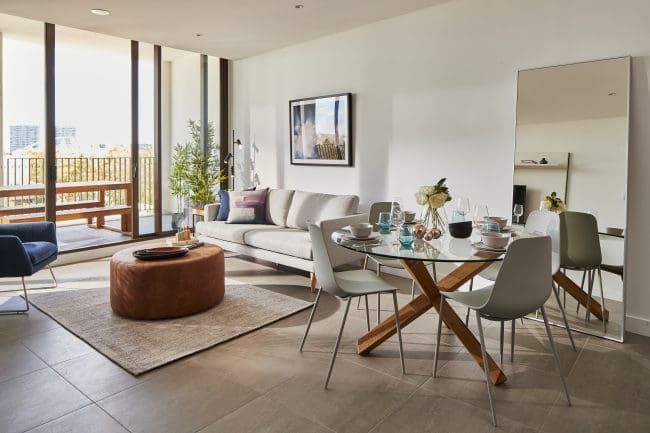There are two new buzz-phrases in the housing affordability lexicon – ‘build-to-rent’ and ‘rent-to-own’.
Build-to-rent and rent-to-own are at opposite ends of the housing culture spectrum but both are being touted as potential answers to the problem of too many people not being able to afford to live where they want in our cities.
Build-to-rent sidesteps both the traditional Australian obsession with owning your home – and rental laws that encourage a rapid turnover of tenants to maximise income – by offering long-term leases at reasonable rates in buildings where nobody is an owner-occupier.
As revealed in the AFR recently, NSW Treasurer Dominic Perrottet is exploring ways of encouraging developers to build apartment blocks specifically for renters who will be able to live there longer, while paying rents that are more allied to current inflation rates rather than the potential craziness of the property markets.
Build-to-rent blocks will have one corporate landlord per building, shutting out the speculative investors who flip tenants every time local rents rise. They will also give long-term tenants security of tenure that they currently don’t enjoy.
Rent-to-own, in contrast, rather than undermining the prevailing attitude to ownership, taps into it by allowing people who can’t raise mortgages by normal means to buy their rented homes.
They do this by paying over the odds in rent for a few years until they have built enough equity to get a mortgage.
The process varies from state to state (and contract to contract) but basically the renter pays a relatively small deposit plus rent that may be as much as 25 percent higher than similar properties.
In exchange, they know that after three to five years they can purchase the property at a pre-arranged price, offsetting the equity they have paid against the cost.
This is particularly attractive to buyers who can’t raise a mortgage by normal means for reasons ranging from poor credit histories to being recent immigrants.
However, this is a largely unregulated sector which is open to abuse and exploitation. But leading property lawyer Anthony Cordato says there is a clear demand for rent-to-own because potential owners can lock in the purchase price while setting money aside to pay for it.
“Why don’t they just set the extra money aside for a deposit?’ he explains. “Because it gives them a set price goal, rather than watching property values getting further away, the longer it takes for them to raise the money.”
Rent-to-own also allows the tenant to make improvements to the property that they can then benefit from when they eventually buy. But it has its pitfalls. Rent-to-own tenants can lose everything if they can’t raise the purchase price when their contract term is up.
“The problem is that there are few clear guidelines or regulations in this sector,” says Mr Cordato. “Every new contract is almost starting from scratch and that can only lead to unforeseen problems down the track.”
One thing is certain – unfettered market forces are no longer the only way of putting roofs over Australian heads, and lateral thinking is already changing the residential landscape.




